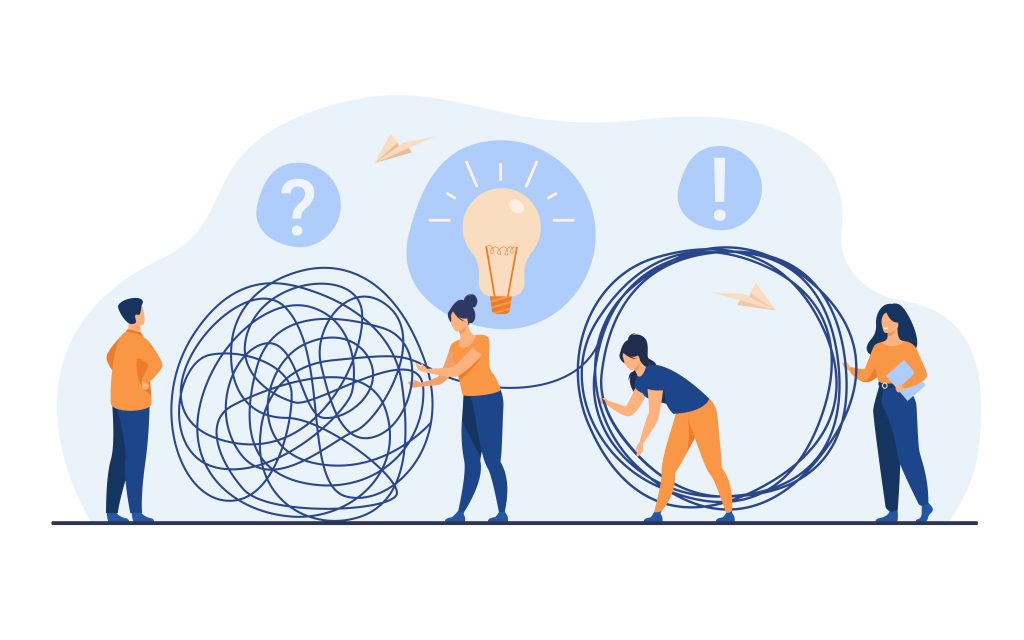CRM (Customer Relationship Management) systems are vital tools for any business looking to streamline its sales, marketing, and customer service processes. However, simply having a CRM in place is not enough. To get the most out of your CRM, you need to continually evaluate and optimize it. In this article, I would like to explore some essential metrics and key performance indicators (KPIs) that you can use to measure the effectiveness of your CRM and make the necessary adjustments to optimize it for success.
This article is not intended to provide all the answers to every single question. More specific issues need to be reviewed as they relate to your particular situation and/or industry. But trust me, the answers are there, and we can find them together. Please reach out to us at optimize@neftingrp.com and we will solve them all!

Identifying When Your CRM Is Not Working
Before we dive into specific metrics and KPIs, it’s essential to recognize when your CRM might not be working as intended. Here are some common signs that your CRM might need attention:
- Sales lacking the information or tools needed to convert leads
- Leads stalling at certain points of the sales cycle, falling through the cracks, or taking too long to close
- High customer churn rates
- Lack of communication and shared insights between marketing, sales, and customer support teams
- Overworked customer support teams unable to address all tickets
If you’re experiencing any of these issues or it sounds very painfully familiar, it’s time to evaluate and optimize your CRM to address the underlying problems.

Set Measurable CRM Goals
One crucial step in evaluating and optimizing your CRM is to set measurable goals. As the management expert Peter Drucker once said, “What gets measured gets managed.” To measure the success of your CRM, it’s essential to set SMART goals that are specific, measurable, achievable, relevant, and timely. By setting measurable goals upfront, it becomes easier to evaluate the effectiveness of your CRM later on.
To make your goals measurable, you need to assign key performance indicators (KPIs) to each of them. KPIs are quantifiable measures that you can use to determine how well your company is meeting its goals. These indicators tell you whether or not your CRM strategy is working and whether you’re on track to meet your CRM goals.
It’s important to remember that the KPIs you choose to measure should align with your specific CRM goals. For example, if your goal is to increase customer retention, you wouldn’t measure the number of open sales opportunities. Similarly, if your goal is to shorten your sales cycle, you wouldn’t measure your email list growth rate. By setting KPIs that are relevant to your goals, you’ll have a better understanding of how your CRM is performing and whether you need to make any adjustments to meet your objectives.
Common KPIs/Reporting to Evaluate and Optimize Your CRM
Let’s explore some common KPIs and Reports you can use to evaluate and optimize your CRM strategy:
Close Rate: This metric measures the percentage of leads that your sales team successfully closes. A high closing rate indicates that your sales team is effective at converting leads into customers.
Upsell Rate: This KPI measures the percentage of customers who make additional purchases after their initial purchase. A high upsell rate indicates that your sales and marketing teams are effective at creating repeat business.
Net-new Revenue: This metric measures the total revenue generated from new customers, indicating the effectiveness of your marketing and sales efforts.
Length of each sales pipeline stage: This KPI measures how long it takes for a lead to move from one stage of the sales pipeline to the next. It can help you identify bottlenecks in your sales process and optimize efficiency.
Length of the sales cycle: This metric measures the time it takes to close a deal from the first contact with a lead to the final sale. A shorter sales cycle indicates that your sales team is efficient and effective.
Customer Lifetime Value (CLV, or CLTV): This KPI measures the amount of revenue a customer generates for your business over their lifetime.
Customer Acquisition Cost (CAC): This metric measures the cost of acquiring a new customer.
Churn Rate: (everyone’s “favorite” in SaaS) This KPI measures the percentage of customers who stop using your product or service. It’s important to reduce the churn rate as it can have a significant impact on revenue growth and profitability.
Marketing Performance Report: This report provides an overview of your marketing campaign’s effectiveness, including metrics like email open and click-through rates, website traffic, and social media engagement.
Customer Support Ticket Report: This report shows the number of support tickets received, how quickly they were resolved, and the satisfaction level of customers with the support they received.
Customer Lifetime Value Report: This report shows the total revenue generated by a customer over their lifetime and can help you identify your most valuable customers.
Churn Report: This report provides insights into why customers are leaving your business and can help you identify areas to improve customer retention.
Custom Reports: Depending on your business’s unique needs, you may need to create custom reports that track specific metrics or KPIs that are not covered by standard reports. Most CRMs offer the ability to create custom reports to meet your specific reporting needs.

By regularly running and analyzing these reports and KPIs, you can gain a better understanding of how your CRM strategy is performing and make data-driven decisions to optimize your approach for improved results.
In conclusion, while no single article can be all-encompassing, it is important to mention additional items that should not be overlooked when discussing CRM:
- Integration with other tools: Integrating CRM with other tools such as marketing automation software, social media platforms, and project management tools can help improve efficiency and provide a more holistic view of customer interactions.
- Data security and privacy: It’s important to remember that companies should take measures to ensure the security and privacy of customer data when using a CRM system. This can include measures such as encryption, access controls, and regular security audits.
- CRM training and adoption: Implementing a new CRM system requires significant training and change management to ensure that employees adopt the new system. Every company must work diligently to develop and improve best practices for training and encourage adoption to maximize the benefits of their CRM strategy.
- Using AI and machine learning in CRM: Many modern CRM (i.e. Salesforce, Zoho CRM, Microsoft Dynamics 365 (CRM), etc.) systems utilize AI and machine learning to analyze customer data and provide insights. These technologies can be used to improve customer interactions and provide a more personalized experience.
- Measuring customer satisfaction: While KPIs such as churn rate and CLV are important, it’s also crucial to measure customer satisfaction to gauge the success of your CRM strategy. There are different methods for measuring customer satisfaction, such as surveys or Net Promoter Score (NPS).
Do you feel like your CRM is working against you?
If you do, please reach out to us at optimize@neftingrp.com and we will fix this together!

